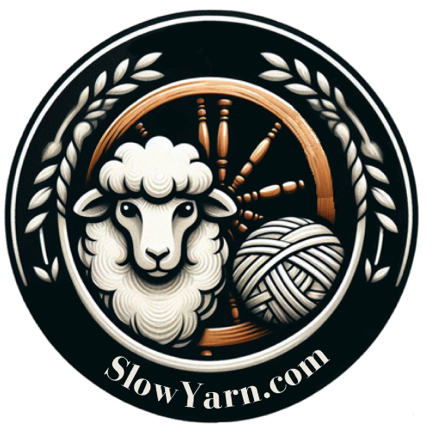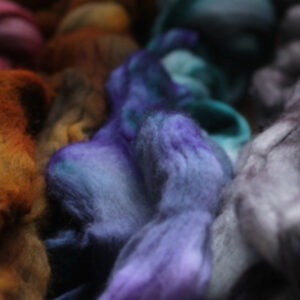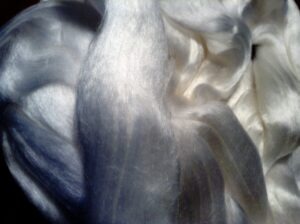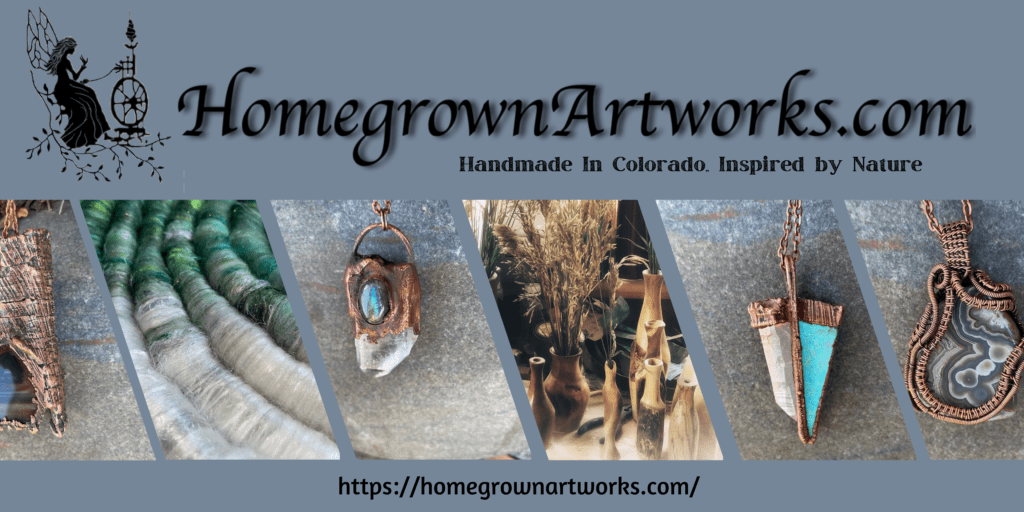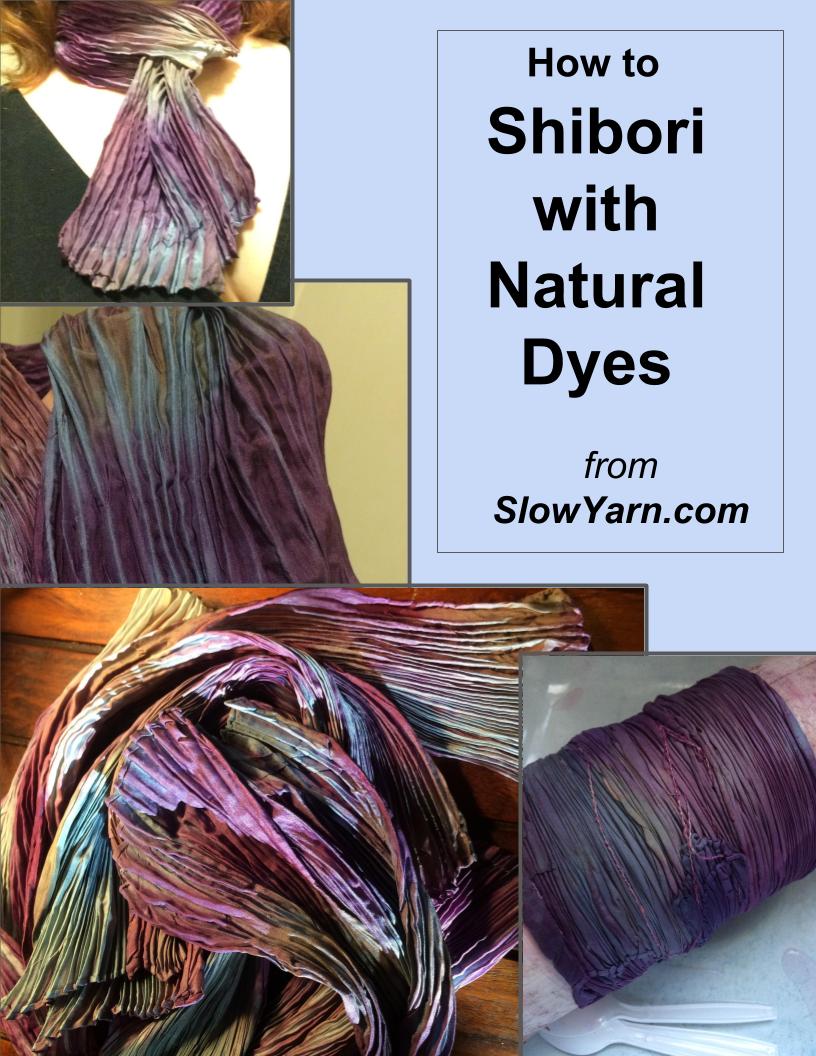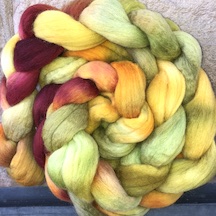

Roving is the long, fluffy rope of fibers that are prepared for hand spinning or felting. It doesn’t have to be made from wool; other fibers can be prepared as roving, or blends of many fibers.
Links on this page will lead you to specific products at Paradise Fibers. This is a small, family run business with wonderful, knowledgeable people and every fiber-art related item your heart could desire.
This roving shows the fluffiness, with lots of air in the preparation. There is some chaos in the direction of the fibers, even though most go in the same general direction. This has been prepared by carding, rather than combing. Click on the photo to see gorgeous roving choices at Paradise Fibers!
Roving is soft, even, and pleasant just to look at or to touch. I once attended the Estes Park Wool Festival with an old friend who was not a fiber artist at all. He taught Viking Literature, and had heard that there were Icelandic sheep at this show. He took one look at some roving and bought a pound of it. (It was Corriedale, not Icelandic.) I asked if he wanted me to teach him to spin, and he laughed. Nope. He just wanted to touch it. The next time I was at his house, there it was, hanging on the wall.
How is roving made?
How is roving made? Here’s where things get a little confusing. If you follow my blog or site, you know that I don’t like hard and fast rules. Also, many of the terms we use in the United States may be different in Europe, or even in different regions of the US. But… in general fiber arts teachers and authors seem to agree:
- Roving is made from a carded process.
- Tops are made from a combing process.
- Roving is fluffy and not perfectly straight.
- Tops are very orderly, shiny, and straight.
- Roving makes woolen yarn.
- Tops make a worsted yarn. (In handspinning, worsted means a tight, smooth, shiny yarn– not a size or weight of yarn as the term is used in knitting.)
This shiny tops is made from Tencel fiber. You can see how the fibers all follow the same direction, and there is very little air space in the rope of prepared fiber. This gorgeous fiber is great for blending with wool for some extra shine, or just spinning on its own. Click here to check out this yummy, yummy roving from Paradise Fibers!
Home Preparation Methods
Roving can be made at home, using a drum carder; combed tops can be made at home using wool combs. Wool combs with a diz are not terribly expensive equipment, but a good drum carder can be costly. Most handspinners at home choose to use the shorter preparation called “rolags.”
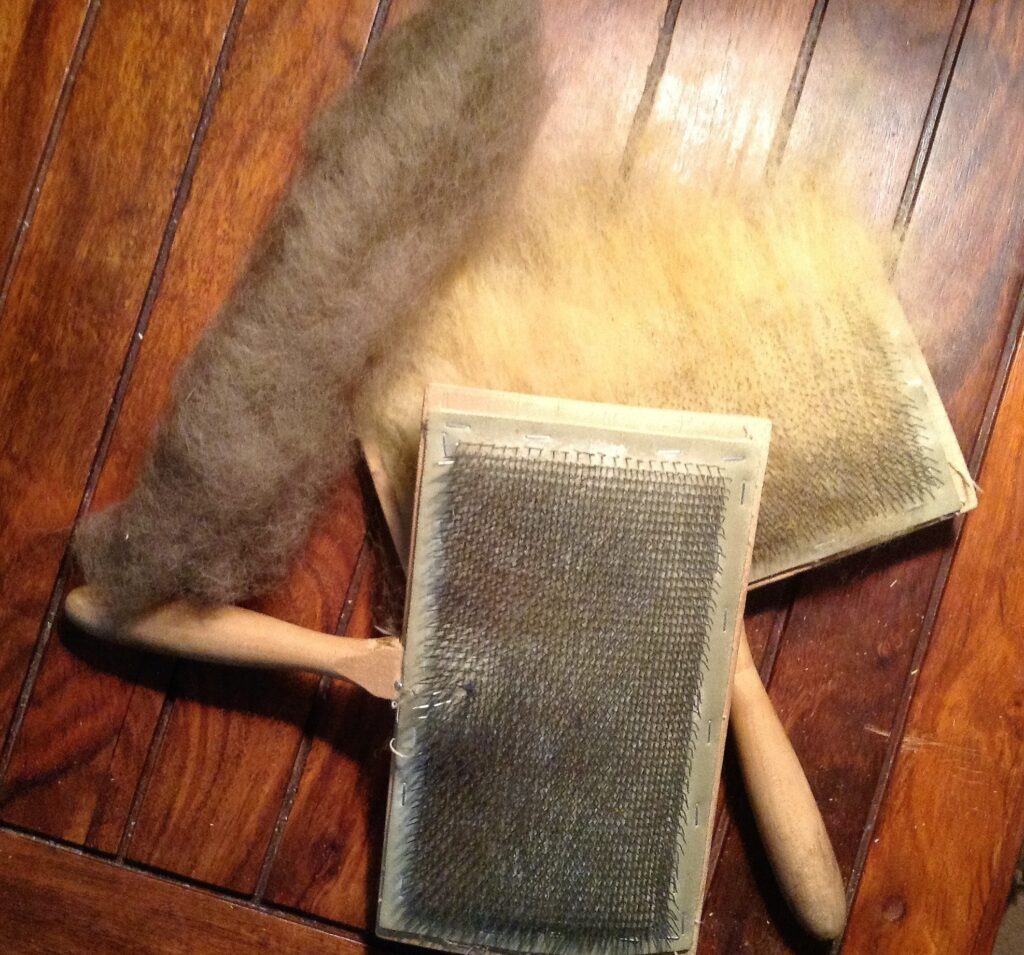
To card fibers at home, the traditional method is to use hand cards to make ready-to-spin rolags, because equipment to create rovings is an investment. Commercially prepared rovings are made with very large carding machines which process large amounts of wool quickly.
Here is some uncarded wool along with handcards and rolags (the traditional carded preparation made with the handcards.) You can get raw fleece for carding from Paradise Fibers– Click here!
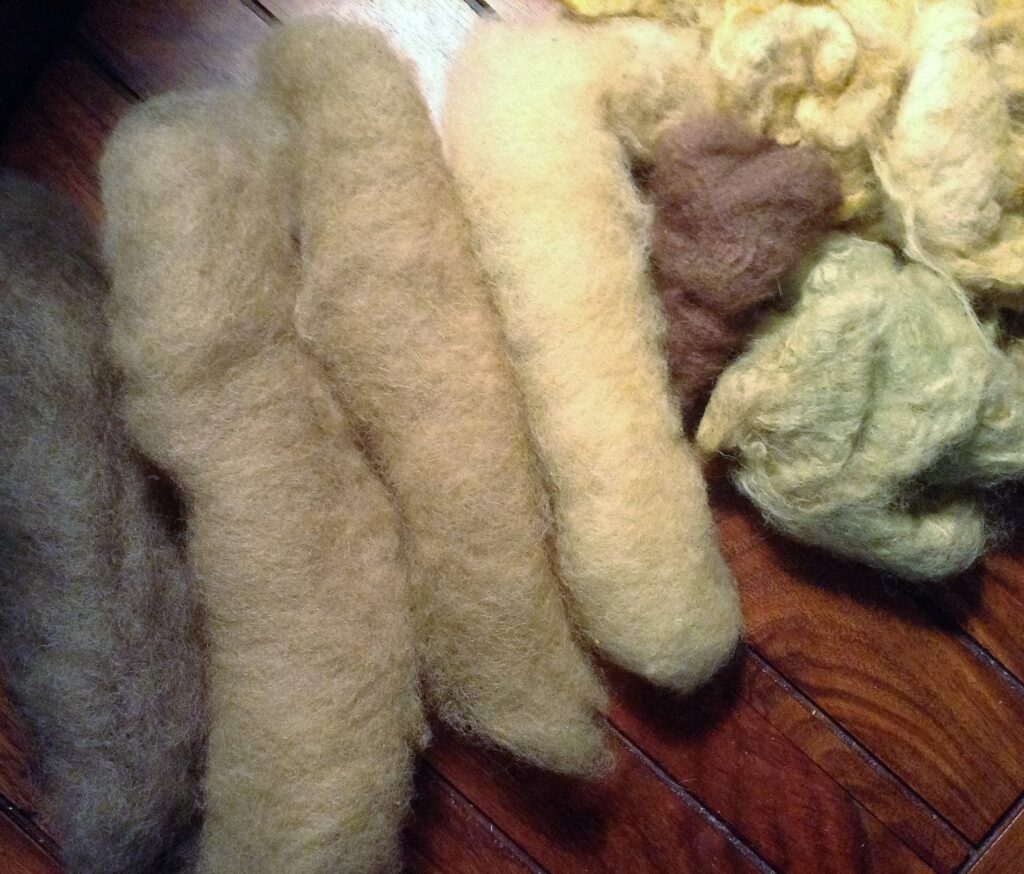
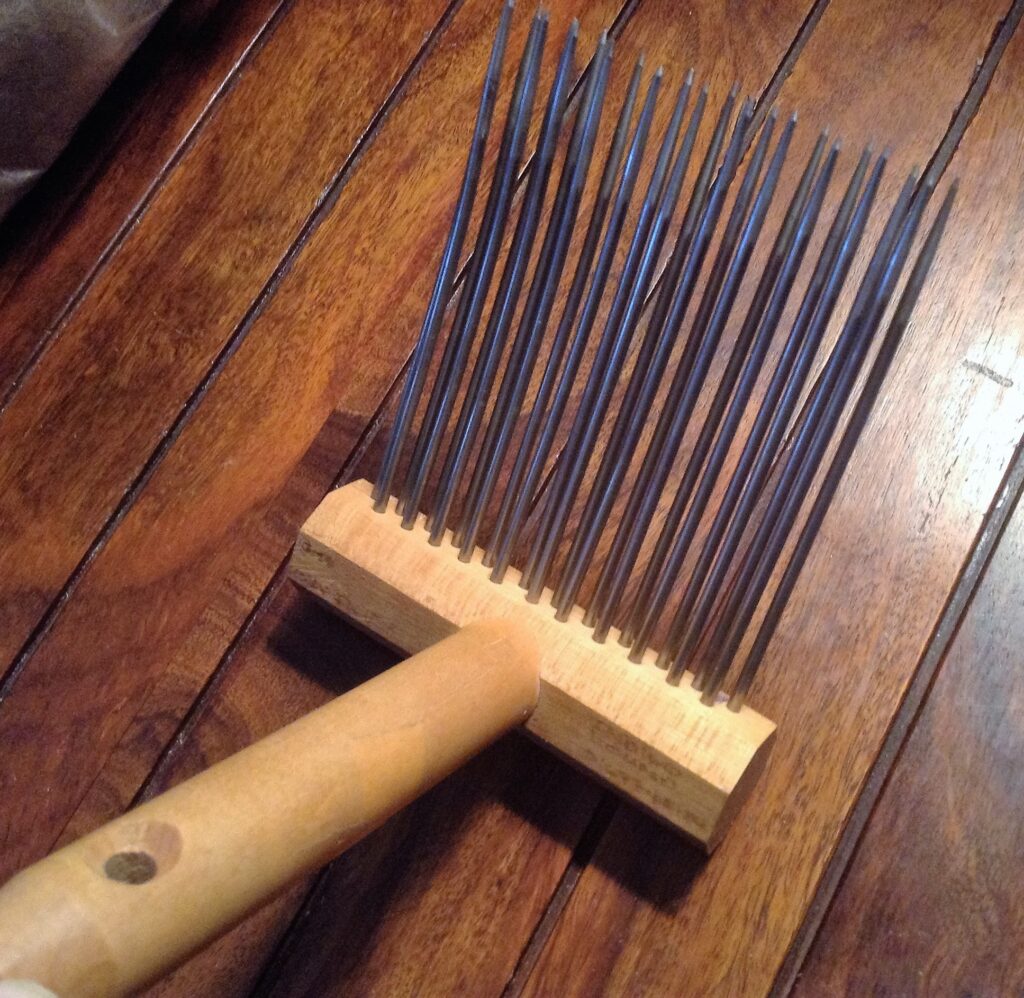
For home preparation of combed tops, there are many variations on these vicious looking wool combs. The wool is pulled off through a “diz,” which has a small hole to control the size of the tops. Click here to shop for wool combs.
Another popular method of preparing fibers to spin at home is the blending board. It is not a replacement for handcards, being designed to created painterly blends of already combed and straightened fibers; handcards are designed to straighten the fibers first.

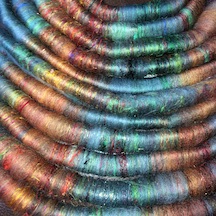
Rolags created on the blending board are longer and tighter than those made with handcards. Blending different colors and types of fiber can be a delightful rabbit hole! It is addicting to “paint” the board, and then to see the resulting yarns you can spin. These rovings are a blend of merino tops, mulberry silk tops, recycled sari silk fibers, and silk hankies.
So…the answer to the original question, “What Is Roving?” Most people use the term “roving” for a carded preparation. You will occasionally hear the term “roving” used for a combed preparation as well. It’s not wrong to use the term to describe any long rope of fiber ready for spinning or weaving, but making a distinction between roving and tops is a little more accurate.
Copyright © 2016-2024 Kelley Adams. All rights reserved.
All text, photos, and graphics are the property of Kelley Adams unless credit is given to an alternative source.
Contact me anytime at Kelley@slowyarn.com.
